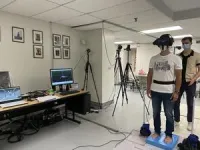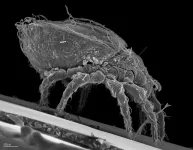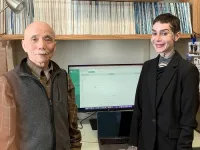North Carolina State University researchers firmly point the finger at the South American Andes Mountains as the place where the Irish potato famine pathogen, Phtytophthora infestans, originated.
In a wide-ranging study of the genetic material found in P. infestans and other members of the Phytophthora species, the NC State researchers provide more evidence that P. infestans spread from South America to North America before wreaking havoc in Ireland in the 1840s. The pathogen still causes late-blight disease on potato and tomato plants around the world.
Much of the study’s evidence compares whole genomes of P. infestans with those of close relative pathogens – Phytophthora andina and Phytophthora betacei – which are only found in South America. The results show that these three species are very similar.
“It's one of the largest whole-genome studies of not only P. infestans, but also the sister lineages,” said Jean Ristaino, William Neal Reynolds Distinguished Professor of Plant Pathology at North Carolina State University and corresponding author of a paper in PLOS One that describes the study. “By sequencing these genomes and accounting for evolutionary relationships and migration patterns, we show that the whole Andean region is a hot spot for speciation, or where a species splits into two or more distinct species.”
In recent decades, scientists have been split in their theories about the point of origin for P. infestans, with some hypothesizing a Mexico origin rather than a South American origin. Yet, the paper shows distinct differences between P. infestans and the two Mexican pathogen species, P. mirabilis and P. ipomoea.
“A lot of the search for resistance to this disease has focused on a wild potato species in Mexico – Solanum demissum – which was used to breed resistant potato lines that were used for the past 100 years,” Ristaino said.
“It points out the importance of looking at the center of origin where a host and pathogen have evolved together over thousands of years,” she said. “Climate change is bringing more drought to higher Andean elevations, so we could be losing some of these potatoes before we learn if they could provide resistance to late-blight disease.” Ristaino added that more research is needed to examine wild potato species from the Andes to learn more about host resistance to P. infestans.
“Our data show that there have been more migrations of the pathogen into and out of South America, and the migrations into and out of Mexico are small in comparison,” said Allison Coomber, a former NC State graduate student researcher and lead author of the paper. “We did find there was gene flow from the Andes to Mexico, and also in reverse, because there's a big Mexican potato breeding program and potatoes have gone into the Andean region in more recent times. But in historic times it was the other way around.”
“Historic P. infestans – the samples collected from 1845-1889 – were the first to diverge from all other P. infestans populations, with modern South American and Mexican populations both showing shared ancestry derived from historic P. infestans,” Ristaino said. “Modern global trade appears to contribute to mixing together the pathogen populations in South America and Mexico.”
Amanda C. Saville, a research and laboratory specialist in Ristaino’s lab, and Ignazio Carbone, a professor of plant pathology at NC State, also co-authored the paper, along with Michael Martin and Vanessa Bieker from the Norwegian University of Science and Technology. Funding was provided by a National Science Foundation National Research Training Grant (award number 1828820), and by two USDA APHIS Plant Protection Act 7721 grants: AP21PPQ&ST000020 and AP21PPQ&ST000062.
- kulikowski -
Note to editors: The abstract of the paper follows.
“A pangenome analysis reveals the center of origin and evolutionary history of Phytophthora infestans and 1c clade species”
Authors: Allison Coomber, Amanda Saville, Ignazio Carbone and Jean B Ristaino, NC State University; Michael Martin and Vanessa C. Bieker, Norwegian University of Science and Technology
Published: Jan. 24, 2025 in PLOS One
DOI: 10.1371/journal.pone.0314509
Abstract: We examined the evolutionary history of Phytophthora infestans and its close relatives in the 1c clade. We used whole genome sequence data from 69 isolates of Phytophthora species in the 1c clade and conducted a range of genomic analyses including nucleotide diversity evaluation, maximum likelihood trees, network assessment, time to most recent common ancestor and migration analysis. We consistently identified distinct and later divergence of the two Mexican Phytophthora species, P. mirabilis and P. ipomoeae, from P. infestans and other 1c clade species. Phytophthora infestans exhibited more recent divergence from other 1c clade species of Phytophthora from South America, P. andina and P. betacei. Speciation in the 1c clade and evolution of P. infestans occurred in the Andes. P. andina – P. betacei – P. infestans formed a species complex with indistinct species boundaries, hybridizations between the species, and short times to common ancestry. Furthermore, the distinction between modern Mexican and South American P. infestans proved less discrete, suggesting gene flow between populations over time. Admixture analysis indicated a complex relationship among these populations, hinting at potential gene flow across these regions. Historic P. infestans, collected from 1845-1889, were the first to diverge from all other P. infestans populations. Modern South American populations diverged next followed by Mexican populations which showed later ancestry. Both populations were derived from historic P. infestans. Based on the time of divergence of P. infestans from its closest relatives, P. andina and P. betacei in the Andean region, we consider the Andes to be the center of origin of P. infestans, with modern globalization contributing to admixture between P. infestans populations today from Mexico, the Andes and Europe.
END





